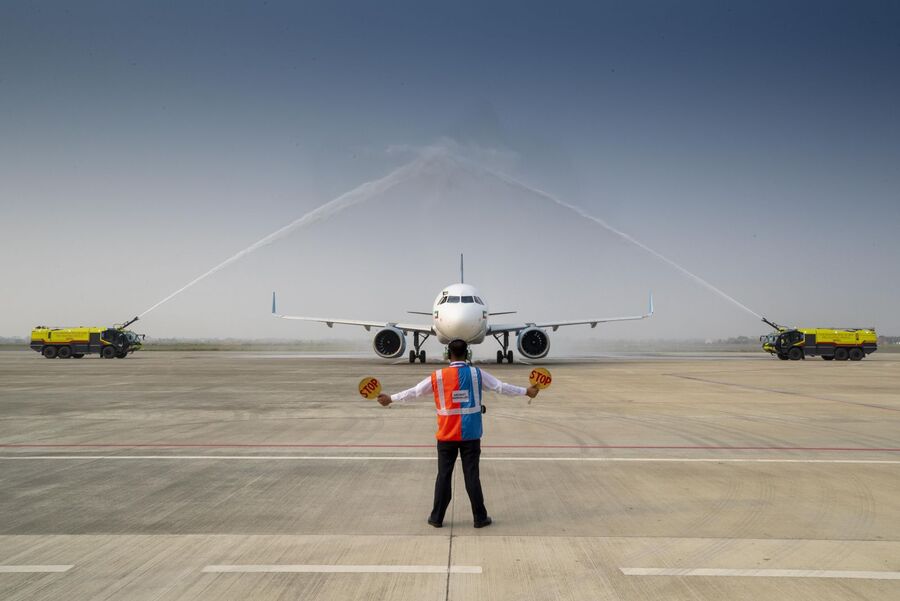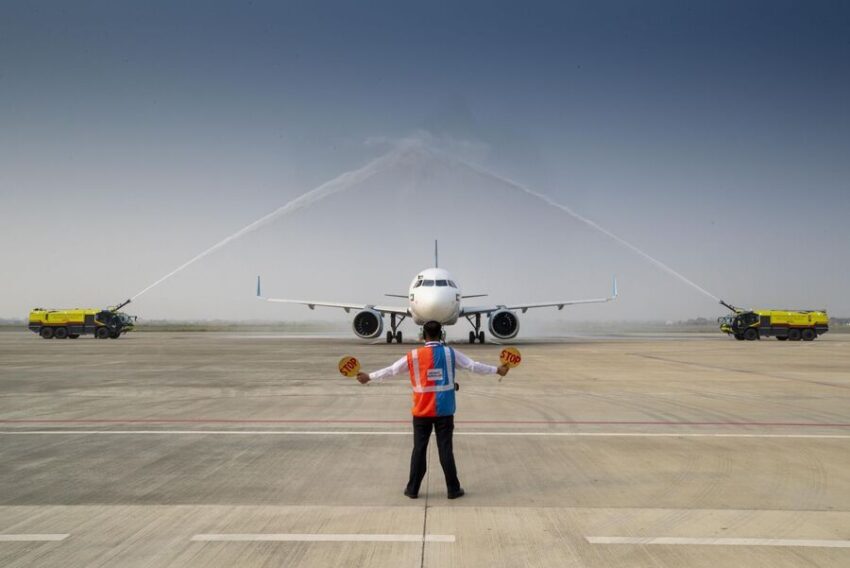 Home » AIRLINE NEWS » New International Airports In Nepal Positioned For Future Economic Success
Home » AIRLINE NEWS » New International Airports In Nepal Positioned For Future Economic Success
Tuesday, August 20, 2024
Reading Time: 4 minutes 
Nepal new international airports, backed by government concessions, hold strategic importance, promising long-term economic growth and increased tourism.
Following the Government of Nepal’s declaration of various fee concessions and tax waivers, several international airlines are gearing up to commence flights to the recently inaugurated Gautam Buddha International Airport (GBIA) and Pokhara Regional International Airport (PRIA). Airlines planning to begin operations at GBIA include Himalaya Airlines, Jazeera Airways, Wizz Air, Air Arabia, and Thai AirAsia. Additionally, Air Astra and Druk Air are preparing to launch services at PRIA.
The Gautam Buddha International Airport (GBIA) was inaugurated on May 16, 2022, marking the birth anniversary of Lord Gautam Buddha. Initially, Jazeera Airways and Himalaya Airlines operated international flights from this airport; however, these services were discontinued after a few months due to low passenger numbers and high operational costs. Currently, Nepal Airlines Corporation maintains a weekly flight from Kuala Lumpur to GBIA. Although Pokhara Regional International Airport (PRIA) officially commenced operations on January 1, 2023, it has yet to see regular international flights apart from a few chartered ones.
In a recent bid to attract more international airlines to these airports, the Government of Nepal has introduced a series of incentives. These include concessions on ticket prices and fuel, waiving of service fees, ground handling charges, and VAT on air tickets, along with granting fifth freedom rights to airlines until mid-September 2026. The government also plans to establish immigration offices, quarantine check posts, and waive visa fees for international tourists at both airports. Additionally, all necessary services such as labor permits, health check-ups, training, and visa centers will be available within the airport districts, eliminating the need for laborers to travel to Kathmandu for these formalities.
For years, international airlines have been requesting fee concessions and tax waivers to make operations at these airports financially viable, especially considering they must use the Simra route, which is longer and more costly. The government’s new initiatives aim to offset these additional costs.
Nepal has long been advocating for a revision of its airspace agreement with India to secure more cross-border entry and exit points in western Nepal for airlines serving GBIA and PRIA. In August 2014, a joint communiqué between Nepal and India mentioned that direct cross-border routes would facilitate flights to and from regional airports in Pokhara and Bhairahawa, reducing time and costs for travelers and enhancing air connectivity between the two nations. Despite these efforts, India has consistently denied these air routes to Nepal.
The refusal to grant air route access is seen by some as a breach of the freedoms of the air, established under the Chicago Convention of 1944. These freedoms are a set of commercial aviation rights that allow airlines of one country to enter and land in another country’s airspace.
Pokhara, recognized as Nepal’s most popular tourist destination and the nation’s tourism capital, is situated along the shores of Phewa Lake. The Annapurna Range, which includes three of the world’s ten highest peaks—Dhaulagiri, Annapurna, and Manaslu—is within 15–35 miles of the Pokhara Valley. The city’s breathtaking scenery, pristine air, and serene lakes have made it a favorite subject of travel writers, often referred to as ‘the Jewel of the Himalayas.’ Every year, tourists from around the world visit Pokhara to marvel at its natural beauty and engage in various activities, including adventure, historical exploration, and leisure. The city offers endless opportunities for studies, religious pursuits, health retreats, sports, seminars, and business trips.
Similarly, Lumbini, the birthplace of Lord Buddha, is a significant destination for millions of Buddhists worldwide. The site is home to several ancient temples, including the Maya Devi Temple, and newer ones funded by Buddhist organizations from various countries. Lumbini also features the Puskarini or Holy Pond, where Mayadevi, Buddha’s mother, is believed to have taken a ritual dip before his birth. Lumbini was designated a UNESCO World Heritage Site in 1997 and continues to be developed as a major center for Buddhist pilgrimage, preserving the archaeological remains associated with Lord Buddha’s birth.
Both newly established international airports in Nepal carry significant strategic importance, and their evaluation should extend beyond immediate risk-benefit analyses. Strategic infrastructure projects like these often require extended periods to achieve optimal returns. However, government agencies in Nepal sometimes prioritize revenue generation over long-term growth, a short-sighted approach that can hinder economic development. While focusing on revenue, issues like direct air routes and geopolitical considerations should not lead to prolonged halts in international flights from these airports. The government’s decision to provide concessions on fuel, ground handling, taxes, and visa fees might impact revenue in the short term, but the long-term economic benefits from increased airline operations and traveler influx are likely to outweigh these initial losses. Considering these airports were financed through external loans, the end of the concession period and the commencement of full-scale operations will ease the government’s ability to repay these loans, especially since the concessions are limited to a three-year timeframe.
The government’s new policy has been met with optimism from major hotel investors in Bhairahawa and Pokhara, who have poured billions of rupees into constructing new hotels. This decision is expected to boost not only large hotels but also smaller accommodations, transportation services, and other businesses in the region. The airports are anticipated to experience increased traffic, particularly as Kathmandu Airport will undergo maintenance from November 2024 to March 2025, during which it will be closed for 10 hours daily. Many airlines, particularly those operating from the Middle East, will likely shift their operations to these new airports during this period.
Given that both Bhairahawa and Pokhara are favored by Chinese and Indian tourists, it is expected that airlines from these two countries will soon commence flights to these airports. Nepal could also focus on attracting tourists from Thailand, Japan, Cambodia, and other East Asian countries, where there are no route issues. The air route challenges are primarily limited to the west. With the operation of both international airports, India might reconsider offering additional western air routes and allowing the operation of the Instrument Landing System (ILS) at GBIA. Given the high volume of Indian tourists traveling to Lumbini and Pokhara by land, Indian airlines stand to benefit from establishing flights to these airports from various Indian cities, especially if India opens new air routes. This could also reinforce the importance of India upholding its previous decision to grant western air routes to Nepal, reflecting the spirit of good neighborly relations.

